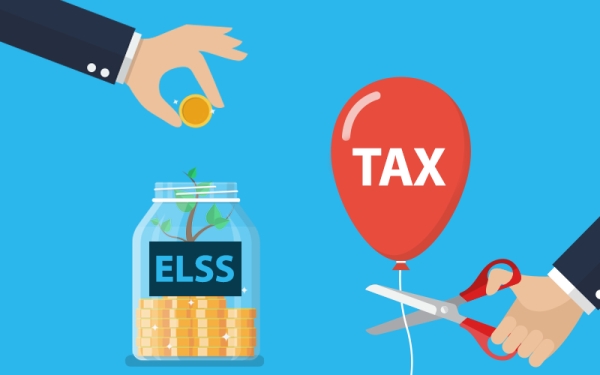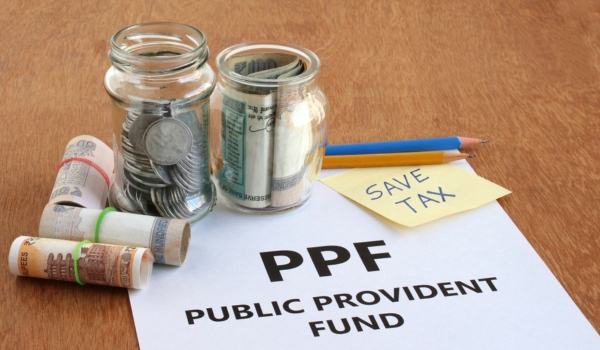9 tax saving investment options for FY 2022-2023
ELSS mutual fund plans have a lock-up period of three years. Therefore, once invested, the individual investor cannot withdraw the funds before the expiration o
- by B2B Desk 2023-07-25 10:59:33
An individual taxpayer who plans to opt for the old tax system for the current FY 2022-23 year must complete the tax saving process on or before March 31, 2023. If an individual has not made any investments allowed under Section 80c of the Income Tax Act of 1961, then he/she must not wait until the last minute. Section 80c allows an individual to claim a maximum of Rs 1.5 lakh from their taxable income. By claiming this deduction, the taxable income of the individual reduces, which results in a decrease in the income tax liability. A person whose total income is taxed at a rate of 30% tax and 4% cess, will pay Rs 46,200 as additional tax if the maximum deduction is not claimed. If the maximum deduction being claimed, the tax output will be reduced by Rs 46,200 (including taxes). Here are some of the common tax saving investment options available under Section 80C, 80CCC, and 80CCD(1) for savings income tax. Please note that the total investments made under section 80C, 80CCC and 80CCD (1) together shall not exceed Rs 1.5 lakh in a financial year.

Equity-Linked Savings System (ELSS): ELSS mutual funds are one of the best tax saving investment option used in Section 80c to save income tax. The maximum deduction that can be claimed is Rs 1.5 lakh. ELSS mutual funds invest in stocks and the returns earned are tied to the market, making them one of the risky investment options in the 80C basket.
ELSS mutual fund plans have a lock-up period of three years. Therefore, once invested, the individual investor cannot withdraw the funds before the expiration of three years from the date of investment. ELSS has the shortest lockout period of all the other options available under Section 80C. There is no maximum amount that can be invested in ELSS mutual funds. The minimum amount varies between mutual fund houses.
Returns earned in the ELSS Mutual Fund will be taxable if redeemed. Capital gains will be taxable if the total capital gains on shares in the financial year exceeds Rs 1 lakh.

Public Provident Fund (PPF): PPF is one of the most popular small tax saving investment plan option. This is because PPF has has EEE tax status. This means that the investment in the PPF is tax free, the interest earned on the PPF is tax free, and the benefit amount is also tax free.
PPFs are a debt investment, and therefore are not as risky as ELSS mutual funds. PPF is a government scheme, so it comes with a sovereign guarantee. Interest in PPF is announced by the government quarterly. For the January-March 2023 quarter, PPF delivers 7.1% annually. The government will revise the PPF interest rate on March 31, 2023 for the April-June 2023 quarter.
The PPF comes with a lock-up period of 15 years, with the lock-up period beginning after the ending fiscal year in which the initial investment is made. For instance, if someone makes their first investment in PPF in August 2022, the lock-up period of 15 years will be calculated from April 1, 2023. Although PPF has a lock-up period of 15 years, it offers loan and partial withdrawal facilities.
Minimum and maximum investment amount for PPF is Rs 500 and Rs 1.5 lakh. An individual can open a PPF account at the bank or at the post office.
Please note that once a PPF account is opened, a minimum investment must be made in the PPF account each financial year. If the minimum investment in a PPF account is not made in single financial year, the PPF account will become a discontinued account.

National Pension Scheme (NPS): An investment in an NPS is eligible for deduction under Section 80CCD(1) of the Income Tax Code. The system offers a pension to the investor from his/her retirement age. Returns under NPS is market linked.
The deduction amount that can be claimed for investment in NPS under section 80CCD(1) is 10% of salary (basic salary plus dearness allowance). The maximum deductionthat can be claimed is Rs 1.5 lakh. Therefore, a person earning a basic salary of Rs 10 lakhs is eligible to claim a deduction of Rs 1 lakhs under section 80CCD (1). To make full use of your Rs 1.5 lakh, you will have to explore other tax saving investment options.
NPS has a lock-in period of 60 years. For example, if someone starts investing in NPS at the age of 25 years, then he/she will have a lock-up period of 35 years. NPS offers a partial withdrawal service, however, such withdrawal is permitted under specific circumstances. On maturity, an individual can withdraw a maximum of 60% of the corpus as lump-sum. This lump sum will be exempted from tax. 40% of the balance must be used to buy annuity plan. The pension/pension received will be taxable in the hands of the individual.
The minimum contribution to NPS is Rs 500, but there is no maximum amount that can be invested in NPS. Opening an individual NPS account must ensure that he has made a minimum contribution of Rs 1,000 in the financial year to prevent suspension of the NPS account.

Employee Provident Fund (EPF): The EPF is one of the most popular tax saving investment option tool for salaried individuals. If the organization is covered under the EPF, the salaried individual will make a contribution to the EPF account. The individual is required to contribute 12% of base salary to the EPF account and the employer will also make a matching contribution.
The interest rate on an EPF account is announced by the government. An EPF account also has a lock-up period until retirement. However, partial withdrawals from the EPF account are permitted in specific cases. Also, if a person after leaving his job does not find another job within two months, he can withdraw the entire money from his EPF account and close the account.
The amount that can be invested in an EPF depends on the individual's salary. However, if a person wishes to make an additional contribution to the EPF account, they can do so through the Voluntary Provident Fund (VPF). The rules for EPF and VPF accounts are the same.
Please note that if the total contribution to the EPF and VPF account exceeds Rs 2.5 in a financial year, the interest earned on the excess contributions will be taxable in the hands of the individual. The amount due received from the EPF account is tax deductible.

Tax Saving Fixed Deposits: The 5-year tax saving fixed deposit is another option available to individuals to save income tax in the current financial year. An individual can invest in tax saving deposit to save taxes at a bank or post office.
The interest rate on tax-saving fixed deposit varies varies between banks. For Post Office Tax Saving Fixed Deposit, the rate of interest is announced by the government. The interest received from a fixed tax savings deposit is taxable in the hands of the individual.
The Fixed Tax Savings Deposit has a lock-up period of 5 years. Therefore, once invested, the funds cannot be withdrawn before the completion of 5 years from the date of investment.
The minimum investment amount for a tax-saving term deposit varies between banks. Minimum investment amount for 5 years term deposit for Post Office is Rs 500. There is no maximum amount that can be invested. However, a maximum tax benefit of Rs 1.5 lakh can be claimed.

National Savings Certificate (NSC): An individual can also invest in an NSC to save income tax. Investing in NSC can be done by visiting the nearest post office. The NSC interest rate is announced by the government every three months. However, once the investment is made, the interest rate remains fixed until the maturity date. NSC is currently offering an interest rate of 7% p.a.
NSC has a 5-year lock-up. Therefore, once an individual has made an investment, the money cannot be withdrawn before completing 5 years. The minimum amount in NSC is Rs 1,000 with no maximum amount. However, tax benefits are limited to Rs 1.5 lakh as per section 80c. Interest earned is reinvested into NSC and paid at maturity. The benefits gained from NSC are taxable in the hands of the individual. However, since the interest is reinvested, this makes it eligible for deduction under Section 80c.

Sukanya Samriddhi Yojana (SSY): This is one of the best tax saving investments plan for girls. A parent of a girl child can invest in Sukanya Samridhi Yojana and save on taxes. Every quarter, the government announces the interest rate on Sukanya Samriddhi Yojana. Currently, the scheme is offering an interest rate of 7.6%.
Anyone can open a Sukanya Samriddhi account through their bank or post office. The Sukanya Samriddhi account expires 21 years after the account was opened. However, deposits must be made within 15 years from the date the account was opened.
Sukanya Samriddhi account can be opened by the guardian of a girl under 10 years old. Only one account could be opened in the girl's name, either at the bank or at the post office. This account can be opened for up to two girls in the family.
The minimum and maximum deposit that can be made in Sukanya Samriddhi Account is Rs 250 and Rs 1.5 lakh respectively in a financial year. If the minimum deposit is not made in a fiscal year, the account will become a defaulting account.
Sukanya Samriddhi Yojana also comes with EEA tax status as PPF.

Senior Citizen Savings Plan (SCSS): Only seniors can invest in this plan to save on income taxes. The interest rate for the Grand Savings Plan is announced by the government every quarter. Currently, the scheme is offering an interest rate of 8%. Once the investment is made, the interest rate remains fixed for the duration of the scheme. Interest is paid quarterly for senior citizen.
The scheme has a lock-in period of 5 years. However, the scheme allows the premature closure of the account. Premature closure of the account also invites penalty as well.
The scheme allows a minimum deposit of Rs 1,000 and a maximum deposit of 15 lakh. The 2023 budget proposed to increase the maximum deposit to Rs 30 lakh from Rs 15 lakh currently.
The interest received from the system is taxable. However, seniors can claim a Section 80 deduction for the interest earned.

Unit Linked Insurance Plans (ULIP): An individual can invest in a ULIP to save tax. It is an insurance product that provides life insurance coverage and the advantage of investing in stocks. The revenues obtained from ULIP products are linked to the market.
The ULIP ban period is 5 years. Once the lock-up period is over, the person can withdraw the funds.
The amount that can be invested in ULIP depends on several factors, such as the age of the person, the amount insured, and the term of the policy. The ULIP benefit income will be taxable if the premium paid for all ULIPs in the financial year exceeds Rs 2.5 lakh.
Also Read: Types Of SIPs: What are the Different Types of SIP Plans in India?

POPULAR POSTS
Best Silver Investment Platforms for 2025: From CFDs to Digital Vaults Explained
by Shan, 2025-10-23 12:22:46
Best Investment Plans in India for 2025: A Complete Guide to Grow and Protect Your Wealth
by Shan, 2025-09-18 10:20:46
Which venture capital firms are the most active in funding Indian startups in 2025
by Shan, 2025-08-06 10:42:11
Top 5 Apps to Buy Digital Gold in India (2025): Safe, Simple & Secure
by Shan, 2025-08-01 10:24:51
10 Highest Dividend Yield Stocks in August 2025
by Shan, 2025-07-28 09:31:02
Exchange-Traded Fund (ETF): A Practical Guide to Smart Investing
by Anmol Chitransh, 2025-04-17 10:18:20
The Ultimate Guide to Commodity Trading: Strategies, Risks, and Opportunities
by Anmol Chitransh, 2025-04-02 07:06:01
RECENTLY PUBLISHED

Loan EMIs to Drop as RBI Slashes Repo Rate - Full MPC December 2025 Highlights
- by Shan, 2025-12-05 11:49:44

The Agentic Revolution: Why Salesforce Is Betting Its Future on AI Agents
- by Shan, 2025-11-05 10:29:23

Pine Labs IPO 2025: Listing Date, Grey Market Premium, and Expert Outlook
- by Shan, 2025-11-05 09:57:07

Top 10 Insurance Companies in India 2026: Life, Health, and General Insurance Leaders Explained
- by Shan, 2025-10-30 10:06:42

OpenAI Offers ChatGPT Go Free in India: What’s Behind This Big AI Giveaway?
- by Shan, 2025-10-28 12:19:11





 Subscribe now
Subscribe now 